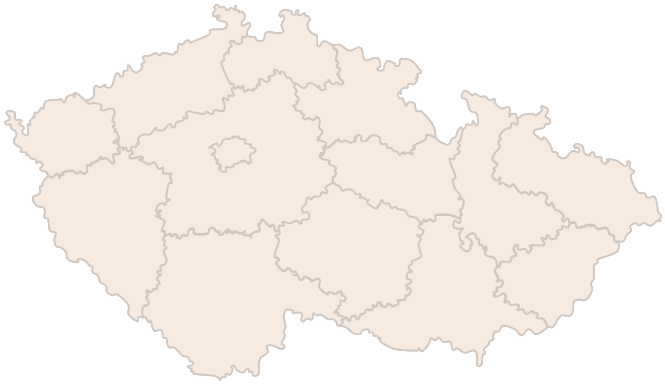What is the Schengen area and why was it created
The Schengen area (Schengen for short) is an area of free movement of people in Europe where there are no systematic border controls between Member States. Its foundations were laid in 1985 with the signing of the Schengen Agreement and subsequently in 1990 with the Schengen Convention. Today it is the largest free movement area in the world, with more than 400 million inhabitants.
The main principle of Schengen is the abolition of internal border controls, while strengthening the protection of common external borders. Member States also cooperate on visa policy and security information sharing. In practice, this means that if you go from the Czech Republic to Germany, Austria or Italy, for example, you will not even notice the border crossing, as there will be no passport control. But Schengen is not just about holidays; it also affects everyday life, work, study and family relations in Europe.
The Czech Republic became a member of Schengen on 21 December 2007, when controls at land borders with its neighbours fell. Since March 2008, airports have also joined. For the Czechs, this meant a significant simplification of travel. Suddenly, there was no need to stand at borders, holidays in Croatia or skiing in the Alps were all the easier.
Are you solving a similar problem?
Need legal help with your visa or residency?
The Schengen area has made life much easier for Europeans – from holidays to job opportunities. If you’re not sure whether you need a visa, residence permit or registration, don’t hesitate to contact us.
More information
- When you order, you know what you will get and how much it will cost.
- We handle everything online or in person at one of our 6 offices.
- We handle 8 out of 10 requests within 2 working days.
- We have specialists for every field of law.
Schengen, the EU and the euro area: they are not the same
A very common misconception is to identify Schengen with the European Union or even the euro area. They are different things. The European Union is a political and economic union of 27 countries.
Schengen is an agreement on the free movement of people, in which 29 countries participate (including non-EU countries such as Norway, Iceland, Switzerland and Liechtenstein).
The Eurozone includes countries that have adopted the euro as their currency – but these are not necessarily in Schengen (for example, Cyprus).
EU customs union then means free movement of goods and a single customs policy, which is different from Schengen.
So, for example, you can go on holiday to Norway without passport control, even if the country is not in the EU. On the other hand, if you go to Ireland (an EU member but outside Schengen), you will have to go through passport control.
Schengen countries in 2025
As of 2025, there are 29 Schengen countries. Bulgaria and Romania also became full members on 1 January 2025, following the abolition of air and sea checks in March 2024. Four non-EU countries are also members of Schengen: Norway, Iceland, Switzerland and Liechtenstein.
| State |
Member of the EU |
Currency |
Note |
| Germany |
Yes |
Euro |
Founding member |
| Austria |
Yes |
Euro |
- |
| Czech Republic |
Yes |
Koruna |
Entry 2007/2008 |
| Slovakia |
Yes |
Euro |
- |
| France |
Yes |
Euro |
- |
| Italy |
Yes |
Euro |
- |
| Poland |
Yes |
Zloty |
- |
| Hungary |
Yes |
Forint |
- |
| Slovenia |
Yes |
Euro |
- |
| Spain |
Yes |
Euro |
- |
| Portugal |
Yes |
Euro |
- |
| Greece |
Yes |
Euro |
- |
| Belgium |
Yes |
Euro |
- |
| Netherlands |
Yes |
Euro |
- |
| Luxembourg |
Yes |
Euro |
- |
| Denmark |
Yes |
Koruna |
- |
| Sweden |
Yes |
Koruna |
- |
| Finland |
Yes |
Euro |
- |
| Estonia |
Yes |
Euro |
- |
| Latvia |
Yes |
Euro |
- |
| Lithuania |
Yes |
Euro |
- |
| Malta |
Yes |
Euro |
- |
| Croatia |
Yes |
Euro |
From 2023 |
| Bulgaria |
Yes |
Lion |
From 2025 |
| Romania |
Yes |
Leu |
From 2025 |
| Norway |
No |
Koruna |
Schengen without EU |
| Iceland |
No |
Koruna |
Schengen without EU |
| Switzerland |
No |
Frank |
Schengen without EU |
| Liechtenstein |
No |
Frank |
Schengen without EU |
TheEU countries outside Schengen are Ireland and Cyprus. Micro-states (Monaco, Vatican City, San Marino, Andorra) have open borders with their neighbours but are not official members of Schengen.
Travelling in Schengen
For citizens of the Czech Republic, travelling within the Schengen area is very easy. You can travel to most European countries with a valid identity card, which is sufficient not only for car or train journeys, but also for flights between Schengen countries. A passport is also a valid document and many people recommend carrying it with you at all times. The reason for this is simple – a passport is universally recognised outside the EU and can make your journey much easier in the event of an unexpected change of planes in a non-Schengen country, a technical re-routing of a flight or when travelling to neighbouring countries that are not yet part of Schengen (e.g. Ireland or Cyprus).
It is important to bear in mind that although border checks within Schengen are not routinely carried out, the obligation to carry a valid identity document remains. The police or other security authorities may ask you to produce it at any time (for example, at a traffic check, when dealing with a traffic offence or in the event of a security emergency). It is therefore definitely not worth travelling without a document.
Another specific feature of Schengen is the possibility of temporarily reintroducing border controls. Each country can reintroduce checks at its internal borders in justified cases, usually for a limited period of time. Typical reasons are security threats, increased migration or hosting major international events (e.g. summits, sports championships or state visits). The most notorious example was during the covid-19 pandemic, when borders within Europe were closed again for a time.
If you are planning to travel, it is therefore a good idea to check whether any countries have just reinstated checks. The European Commission publishes an up-to-date list and the Czech Ministry of the Interior’s website is also a reliable source for Czech travellers. This will help you avoid unpleasant surprises and let you know that you will have to wait longer at the border, for example.
Tip for article
Tip: If you’re planning to work, intern or study abroad, you’ll probably come across the Europass. It’s a European standardised CV that makes it easier for employers across Europe to compare candidates and get a quick overview of their qualifications. We’ll give you advice on how to create one.
Schengen visa and the 90/180 rule
If you are a citizen of a non-EU country that does not have a visa-free regime with the European Union, you need a Schengen visa to travel to Schengen countries. This is a short-term entry permit that entitles you to stay in all Schengen member states for a limited period of time.
The basic principle is the so-called 90/180-day rule. This means that a foreigner is allowed to stay in the Schengen area for a maximum of 90 days during any period of 180 days. There is often a misunderstanding – it is not a fixed “three months in a row” but the sum of all stays within the last six months. So if someone spends 30 days in Italy, goes home and then comes to Germany for 60 days two months later, they have used up their 90-day limit. They will have to wait until the days are up again in the “time window” before they can travel to Schengen again.
Schengen visas are divided according to their purpose:
- Type A – airport transit visa: it only entitles you to stay in the transit zone of an international airport and cannot be used to enter the Schengen area.
- Type C – short-stay visa: the most common form, allowing a stay of up to 90 days within a 180-day period.
The visa is issued by the consulate or embassy of the country which is the main destination. For example, if you are travelling to France and will be spending most of your days there, you would apply at the French consulate. The visa is valid for all Schengen countries, you do not need to apply separately for each country.
Holders of a short-term Schengen visa have limited rights. First of all, you cannot work on the basis of this visa – whether as an employee, self-employed or temporary worker. Nor is it possible to study for more than a few weeks. To work or study for a long period, you must apply for a long-term visa or residence permit (e.g. student visa, work card, EU Blue Card).
If a foreigner exceeds the maximum period of stay and stays longer in Schengen, he/she commits an overstay. This can have serious consequences, such as financial penalties, administrative expulsion and even a ban on entering the Schengen area for several years.
Later return can also be problematic – an alert remains in the SIS (Schengen Information System) which can be detected by border checks. It is therefore always better to either leave Schengen early or apply for the right type of visa or residence permit in time.
Tip for article
Tip: Czech citizenship is not just a passport, it’s a ticket to a full life in the EU. You can get it by birth, marriage, declaration or after years of residence. Find out how and where to apply for citizenship.
Working and studying within Schengen
Schengen membership does not automatically mean the right to work in another country. EU citizens’ rights to work derive from EU law, specifically the principle of free movement of persons. If you are an EU citizen, you can work or do business in another Schengen country – you just need to declare your residence and sort out your health and social security. Students enjoy similar benefits.
By contrast, citizens of so-called third countries can travel to Schengen on a short-term visa, but can only work on the basis of a permit. If they are already long-term residents in one of the Schengen countries, they can also use so-called cross-border mobility (for example, to work temporarily in a neighbouring country) under certain conditions.
Summary
The Schengen area makes travel and everyday life easier for Czechs – passport controls have been abolished between the 29 member states, so an ID card is sufficient for travel, but it is still advisable to carry a passport in case of unexpected transfers outside the EU. However, Schengen is not the same as the EU or the eurozone – countries such as Norway and Switzerland are also members, while Ireland and Cyprus are not yet part of it. In addition to the benefits of free movement, it is good to know about the possibility of temporarily reintroducing border controls, the rules for third-country nationals who need a Schengen visa and must comply with the 90-day limit within 180 days, and the fact that you are not allowed to work on a short-term visa. EU citizens in particular benefit from free movement of persons to work and study within Schengen, while foreigners from so-called third countries need a permit or long-term residence.
Frequently Asked Questions
What is the Schengen area and how is it different from the European Union?
The Schengen area is an area of free movement of people where there are no systematic border controls between countries. It is not identical to the EU – non-EU countries are members (e.g. Norway, Switzerland), while some EU countries (Ireland, Cyprus) are not in Schengen.
Is my ID card enough to travel within Schengen or do I need a passport?
Czech citizens only need to travel with an ID card. However, it is advisable to carry a passport for unexpected situations – for example, a transfer outside the EU or travel to non-Schengen countries.
What is the 90/180 rule and who does it apply to?
The rule means that citizens of so-called third countries with a short-term Schengen visa can stay in Schengen for a maximum of 90 days during any 180-day period. This is not three months in a row, but the sum of all stays in the last six months.
Can I work on a Schengen visa?
No. The short-term visa only allows for tourism, visits or short training sessions. A long-term visa, work card or residence permit is required for work or longer studies.
Can Schengen borders be controlled again?
Yes, although Schengen operates on the principle of free movement, countries can temporarily reintroduce controls – for example, due to security threats, migration or when hosting major events. For an up-to-date overview, visit the European Commission or the Home Office website.




